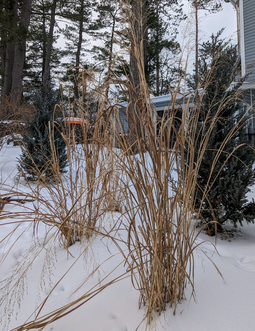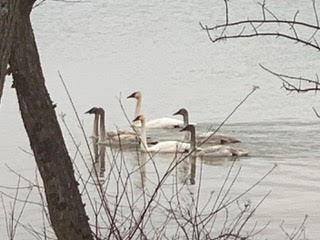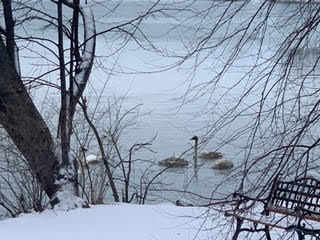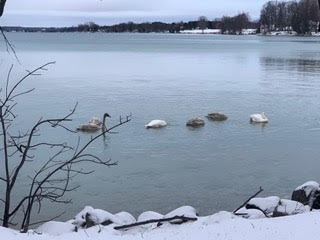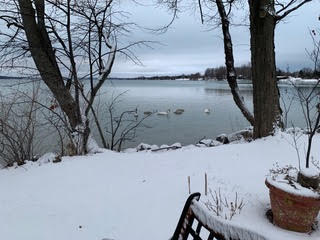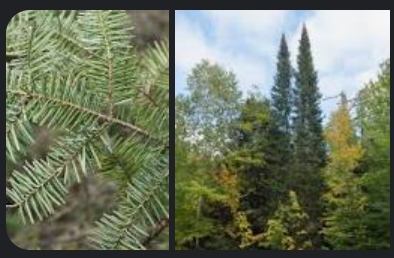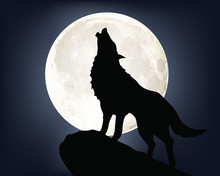January Almanac
January 5
|
When left uncut during the winter, perennial grasses provide small creatures shelter as well as beautiful landscape texture
and color. Some perennial grass species also increase the amount of carbon that can be stored in the soil. Soil carbon storage is another way to mitigate climate change. _Julie Farrell |
January 20
Here are pictures we took on Jan 20, 2023, on the northern end of Elk Lake, just north of the golf course. The swans came by our home heading north and a few hours later they came back heading south. They stopped back by the next morning, but I didn’t get a picture. They do appear to have black bills so I am hoping they are native trumpeter swans. I couldn’t find anything about mute swans’ beaks turning black in the winter, so hopefully they are trumpeters. _Corky Crimmins
January 23
|
This is a good time of year to appreciate our native coniferous species which are so important to a wide variety of wildlife in the area for food and shelter, like Balsam fir, Abies balsamea, a slow-growing tree of the boreal forest that reaches its southern extent of its range in northwest lower Michigan. The spire-shaped tops of balsam fir are quite distinctive from a distance, and it can grow in a wide variety of habitats. Balsam fir is interesting for a variety of reasons, including its ability to grow in wet soils, its slow growth, and its ability to grow in the understory of dense forests. The oldest known balsam fir was recorded to be 245 years old, and it generally takes 20-30 years for a balsam fir to produce seeds. Balsam fir is well known as a popular Christmas tree, with fragrant needles and is an important tree for wildlife, water quality and many other uses. Unfortunately, like our native hemlocks (Tsuga canadensis), the tree can be impacted by a non-native introduced insect
called the Balsam wooly adelgid. More information:_Angie Bouma, Senior Land Steward, Grand Traverse Regional Land Conservancy |
January
|
January was known as the Wolf Moon among several Indian tribes when the first English settlers arrived, and the calendar system used by naturalist Hal Borland in his writings in the New York Times over nearly 40 years of exploring the ways human life was bound to the greater world of plants, animals, and natural processes. January was “The time of the hungry wolf pack, the howling wind, and a snug house and warm fireside.” Hal Borland’s Twelve Moons of the Year. 1979; (Barbara Dodge Borland, 2020).
|

